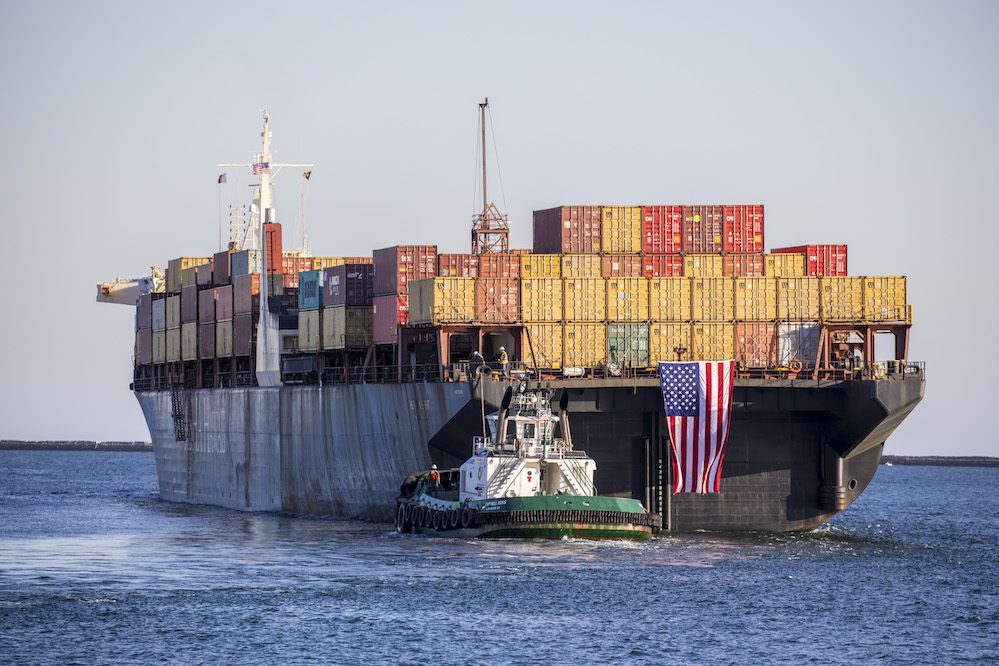By Lisa Baertlein and Ellen Zhang
LOS ANGELES/BEIJING, Jan 15 (Reuters) – U.S. imports from China finished the year strong after some companies stockpiled shipments of apparel, toys, furniture and electronics ahead of President-elect Donald Trump’s plan to impose new tariffs that could revive a trade war between the world’s economic superpowers.
Trump, who has threatened to slap tariffs of 10% to 60% on goods from China, takes office on Jan. 20. During his first term, Trump mainly targeted Chinese parts and components. Economists and trade experts predict his next wave of tariffs could apply to finished goods.
“There has thus been an uptick in the exports of final goods from China to the U.S., as importers aim to front-run possible tariffs on consumer items,” said Frederic Neumann, chief Asia economist at HSBC in Hong Kong.
Chinese trade officials on Monday said December exports surged to record levels.
The large rise was in part a reflection of concerns about escalating trade protectionism, Lv Daliang, spokesperson for the Chinese customs administration, said at a press conference in Beijing.
U.S. seaports handled the equivalent of 451,000 40-foot containers of goods from China in December, a year-over-year increase of 14.5%, according to trade data supplier Descartes Systems Group.
That capped a year when U.S. imports of bedding, plastic toys, machinery and other products from China rose 15% from 2023, according to Descartes.
Helen of Troy Ltd, seller of OXO kitchen gadgets, Hydro Flask water bottles and Vicks over-the-counter medicines, contributed to that increase. It has been building strategic inventories aimed at reducing exposure to tariffs, executives said on an earnings call last week.
“The inauguration is literally days away. I think we’ll get some more clarity once President-elect Trump is in office,” Helen of Troy CEO Noel Geoffroy said of new U.S. tariff policies.
Tool and electrical and plumbing supply distributor MSC Industrial Direct sources roughly 10% of its inventory from China. It is stocking up on its most popular products that could be at risk from new tariffs while developing promotional campaigns for goods made in the United States, executives told investors last week.
Teasing out the true effect of the risk of Trump tariffs on overall import gains is difficult because companies closely guard trade data.
RESILIENT DEMAND
Further complicating the analysis, resilient U.S. shoppers have been fueling demand. Some importers also brought in safety stocks to protect against disruptions from Houthi attacks on shipping near the Suez Canal trade shortcut and a labor dispute at seaports on the U.S. East Coast and Gulf of Mexico.
Meanwhile, Trump also has threatened to tariff goods from many other countries, including North American neighbors Mexico and Canada.
Walmart, the biggest user of container shipping, is among the retailers that cargo data analysts say have ramped up imports in recent months. Walmart did not comment on that assessment.
Several categories of U.S. imports from all geographic sources posted meaningful gains during the fourth quarter, according to S&P Global Market Intelligence.
Textiles and apparel jumped 20.7%; leisure products, chiefly toys, gained 15.4%; home furnishings increased 13.4%; and household appliances and consumer electronics posted gains of 9.6% and 7.9%, respectively, according to S&P.
Consumer staples categories such as household and personal care, as well as food and beverages, rose 14.2% and 12.5%, S&P said.
Michael O’Shaughnessy, CEO of Element Electronics Corp., said there was a year-end rush to get goods into the United States.
Element imports components, mainly from China, for its flat-screen TV assembly plant in Winnsboro, South Carolina – America’s last large-scale television production plant. It also imports finished televisions. The company built buffer stocks when dockworkers were threatening to shut the East Coast ports it uses.
Still, O’Shaughnessy said there’s a limit to how much he’s willing or able to bring in.
“There’s just no place to put everything,” he said. “Also, there are working capital constraints. Every day it sits there it costs you money.”
(Reporting by Lisa Baertlein in Los Angeles, Ellen Zhang in Beijing and Tim Aeppel in New York; Editing by David Gregorio and Aurora Ellis)
(c) Copyright Thomson Reuters 2025.

 Join The Club
Join The Club











